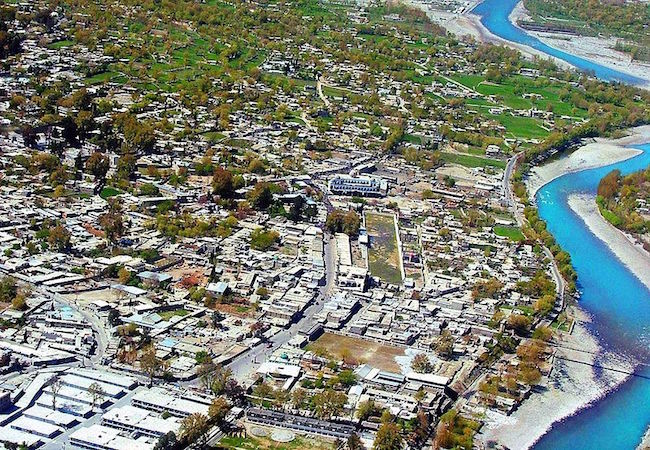
By Sadia Kazmi
While CPEC is the flagship project of China’s BRI initiative, Gilgit-Baltistan takes up the most significant place within CPEC. The crucial link Khunjrab Pass between China and Pakistan wouldn’t be possible if the area of Gilgit-Baltistan is taken away from the picture. It would literally render the whole project null. It makes the element of “connection” between China and Pakistan, a reality. Not only that but also provides the economic, cultural and historical linkages between two neighbors. Hence the CPEC will not only be beneficial for the four provinces of Pakistan but will be able to bring in prosperity and further economic benefits to the Gilgit-Baltistan region too. The infrastructural and other projects will draw in more visitors and ultimately has the potential to increase the prospects of trade and tourism. Along with providing connectivity, it reduces distance by offering the shortest possible route up till Gwadar, cutting it down to only 5,000 km from 16,000 km. These factors collectively make Gilgit-Baltistan an important part of CPEC for both China and Pakistan.
However, there are certain hiccups which need to be addressed to make Gilgit-Baltistan most cost-effective. First and foremost, India wrongly yet stubbornly claims its territorial rights over Gilgit-Baltistan region, which as per their version was never part of Pakistan. At the same the local population of Gilgit-Baltistan, even though is looking forward to all the advancement and infrastructural development promised by the CPEC, they are equally worried about the compensation for their displacement. Simultaneously the provincial rights for Gilgit-Baltistan is also an on-going debate.
The positive aspect is that the locals of the area are indeed in high spirits and are welcoming towards the promised development by the CPEC. The federal government has already provided Rs. 45 billion under Public Sector Development Program (PSDP) for the construction of Express Way and to construct link roads between Gilgit and Baltistan region. The work is expected to be completed in three years. At the same time, another road project of 400 km will be constructed from Gilgit to Ghizer, Shandoor, Chitral, Dir and Peshawar. It is believed that the road structure will not only facilitate the proximity but will make it possible and a lot more convenient to deliver the local goods into the Chinese markets. The roads will also help promote tourism industry. The 73,000 sq km region is touted as the paradise for mountaineers and is home to five of the eight peaks that are above 8,000 meters and more than 50 mountains over 7,000 meters. It also has the world’s second highest peak L-2 and the Nanga Parbat. The Pak-Army troops are planned to be deployed to make the area and Karakoram Highway safe for the visitors.
Telecommunication is another area where the attention is being focused into. The otherwise ill performing internet and telecommunication infrastructure is being replaced by the most advanced one. Only recently, PM Nawaz Shairf visited the area and laid down the foundation stone of a fibre optic project under CPEC. Laying down of fibre optic line is already underway, that would cover 820 km distance and run between Khujerab to Rawalpindi. This project is expected to be completed in two years at the cost of Rs. 4.4 billion. This virtual connection between the significant nodes of the country makes it a groundbreaking initiative. Giglit-Baltistan will surely emerge as a center for high speed internet hub of Pakistan. Its people will be the core beneficiary and will receive the 3G and 4G and other modern telecommunication facilities.
As per the reports, two hydropower projects are exclusively dedicated for this region. A 100 megawatt hydropower project in Gilgit and another 80 megawatt project in Fundar valley and in Ghizer district. The estimated cost of these projects is said to be aprrox. Rs. 50 billion each. Along with that, there is a plan to establish a regional grid too. This will pool in much needed energy resources for Gilgit. The financial resources, that almost cost up to Rs. 25 billion for this grid will be provided by the federal government.
Diamer Bhasha dam has also been included in CPEC. Since the people are facing shortage of electricity, the Diamer Bhasha dam will help in generating 4500 MW of electricity once completed.
The region is also set to get an economic zone. This will indeed boost trade and commerce. The economic zone will be spread over the area of 250 acres and will have designated industries for agriculture, livestock, minerals and handicrafts. This will generate extensive opportunities for vibrant economic activates.
Hence Gilgit-Baltistan is indeed going to draw maximum benefit from the multibillion dollar CPEC project. There will be immense upgradation in the living standards of the people. The strategic significance of the region has also been increased because of its pivotal position. However, the irritants should also be addressed in parallel to the developmental initiatives in the region. The issue of Kashmir looms large between Pakistan and India and hence increases the vulnerability of the region. Other concerns for the acquisition of community land and the constitutional right should also be given due consideration.




